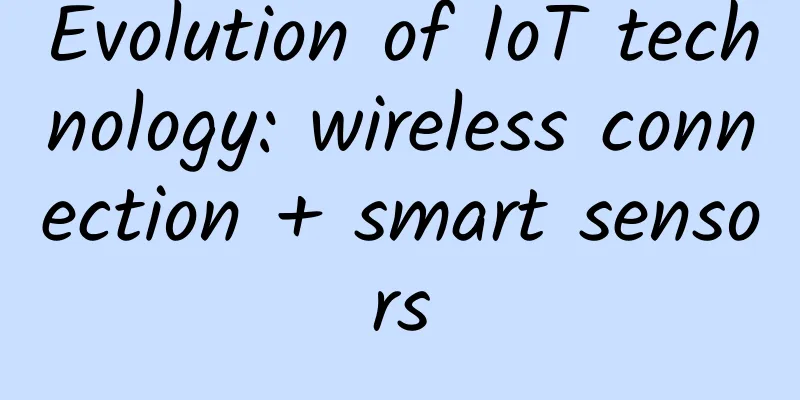Evolution of IoT technology: wireless connection + smart sensors

|
The Internet of Things is a term for connected embedded systems that brings together two evolving technologies, wireless connectivity and smart sensors. Combined with the latest advances in low-power microcontrollers, these new “things” are connected to the Internet easily and cheaply, ushering in the second industrial revolution for humanity. Connected embedded systems are small microcontroller-based computers that do not require an interface to access the system, and humans interact with the system using sensors or other advanced detection mechanisms. Sensors collect data and determine whether the data is valuable, forming the main part of this system, and the term "Internet of Things" means that these sensors are networked, through the use of WiFi or Ethernet networks, and can also be implemented using protocols such as ZigBee or Bluetooth without an IP address. The choice of network protocol is based on the distribution of nodes and the amount of data collected, and the data is sent through the network to the main center or computer, which then collects and analyzes the data, stores it in memory, and even makes system decisions based on the results of the analysis. IoT sensor node block diagram, including 802.15.4 wireless, A/D converter, analog front end, battery management, Bluetooth, cloud storage, custom wireless, DC/DC converter, environmental sensor, flash memory, memory module, microcontroller, RAM memory, RFID /NFC, photoelectric sensor, power management, smart sensor, video, wireless network. These connected embedded systems are standalone microcontroller-based computers that use sensors to collect data. The systems are networked together typically via a wireless protocol such as WiFi, Bluetooth, 802.11.4 or a custom communication system. The choice of network protocol is based on the distribution of the nodes and the amount of data collected. Key nodes of modern IoT require some form of data security encryption, the most common being AES256. This is critical to help break security, and it should be noted that this design is only for reference design and product recommendations, and compatibility and interoperability are not currently tested. |
<<: Whether you like it or not, the era of paid video is coming
Recommend
The most direct and simple optimization method for through train keyword promotion!
1. First of all, you must determine the products ...
How to judge whether the air in your home is good or bad? Highly recommended to collect!
With the recent outbreak of various respiratory d...
Looking at the breakthrough and growth logic of enterprise service products from the perspective of WeChat for Business!
Whenever Tencent releases a new product, the enti...
If the sun goes out quietly, will humans still have hope of survival? Life will enter a countdown
If the sun quietly goes out, will humans still ha...
Is the Coocaa art TV that sells for 8,000 yuan really just a passing fad?
Art is a general term for talent and technology, ...
Is “rewarded forwarding” really a panacea for activating users?
When it comes to analyzing user behavior, which m...
Solid info! 5 major customer acquisition models for APP promotion!
I used to think about this question often when I ...
Kuaishou Operation Guide from 0 to 1
As the saying goes, "Everything is difficult...
Example analysis: Performance optimization of "Qichu Encyclopedia"
Qiqubaike has undergone a major revision after th...
World Flu Day | Flu is gone but you feel "drained"? Here's what you should eat and drink →
Today is World Flu Day. Every autumn and winter, ...
The online sale of atropine, the "miracle drug for myopia", has been suspended! Can children still use it? Experts remind us:
Recently, Shenyang Xingqi Eye Hospital announced ...
Demand is still there, and the competition focus of air-conditioning products has shifted to the third and fourth tier markets
The performance of the home appliance market was ...
Why Are Your Facebook Ads Burning Money So Fast?
When you run Facebook ads , one of the most impor...









